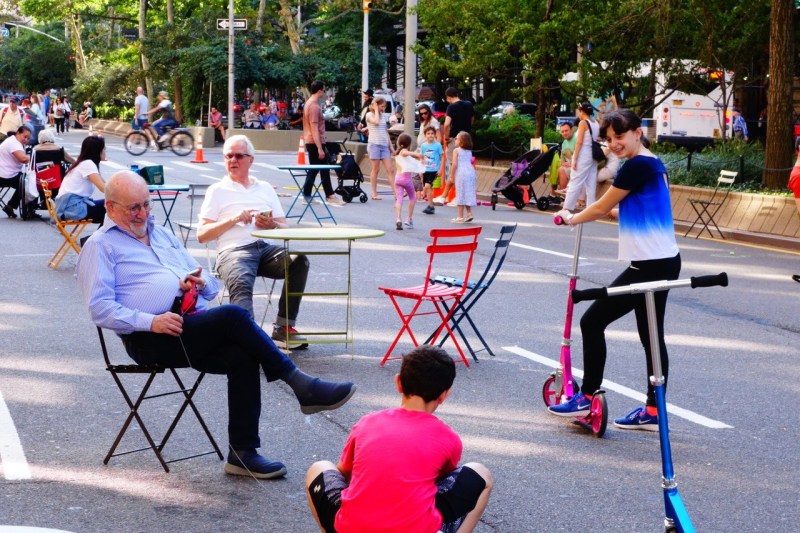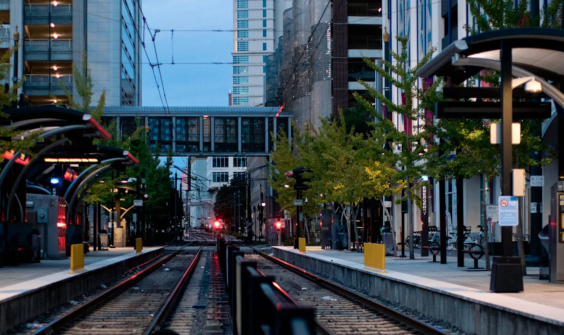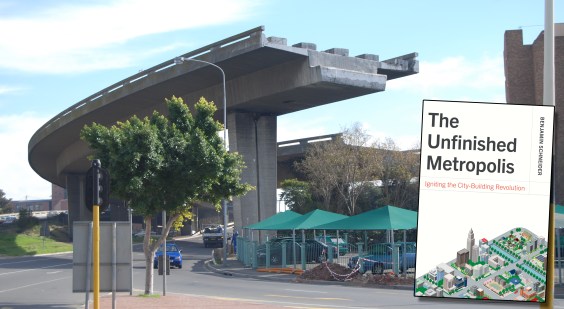The city is slowly considering pedestrianizing the east side of Broadway from 73rd to 79th streets, but those changes aren't coming fast enough for Upper West Side safe-streets activists.
The Department of Transportation met with the Broadway task force of Community Board 7 earlier this month to discuss the pedestrianization — with vague promises that the changes might occur within “a few years,” according to meeting participants.
“The clear consensus in the room was that [the uptown side of Broadway from] 73rd Street to 79th Street should be pedestrianized,” said Howard Yaruss, a task force member and chairman of the Transportation Committee of the board, which covers the area from Columbus Circle to 110th Street. “We’re really looking forward to seeing that happen. They said they’d get back to us with some ideas.”
Ideas? City officials need only to open their eyes. Last month, local group Streetopia Upper West Side banished cars on the six-block stretch for a day-long “Celebrate Broadway” event. Residents lounged on chairs; children played in the road; dancers and Tai Chi practitioners performed as residents strolled among stalls.
Lisa Orman, director of Streetopia UWS, said the success of the event showed how easy it is “to get people used to reclaiming the street.”
And there's no reason for delay: The six-block stretch from 73rd to 79th streets represents low-hanging fruit for reclaiming public space from automobiles. Verdi Park — at the confluence of Broadway, Amsterdam Avenue and 72nd Street — prevents northbound cars from driving directly uptown on Broadway. Motorists who want to access Broadway must travel on Amsterdam and then turn left on a westbound street before turning right to get back onto Broadway — a maneuver that many don’t find worth the trouble.
Plus, car ownership in the area is also low — about 80 percent of residents do not own a vehicle, Yaruss said. (Any shared-street or pedestrianized design would have to accommodate the M104 bus that now travels northbound on Broadway via the one-block Amsterdam detour.)
The task force hopes that pedestrianizing the street will address the issue of the many vacant storefronts along the stretch — with the greater foot traffic generated by a pedestrianized or shared street contributing to a revival of restaurants and cafes, as it has in other cities. Anecdotal evidence lends credence to the scenario. A public-outreach sampling DOT took of passersby during the Sept. 21 event and again on Sept. 25 showed that the majority of respondents — 84 percent — arrived to the area either on foot or by transit and that more than two-thirds — 67 percent approved of closing Broadway to car traffic, at least some of the time.
As a result, Yaruss remains disappointed that Mayor de Blasio is slow to create such pedestrian zones.
"We want more," Yaruss said. "The mayor is essentially telling us, 'No, slow down.' That's just wrong."
Yaruss's complaints echo many others heard over the years.
DOT’s Public Space Unit has created a number of shared-street spaces and pedestrian plazas along Broadway during the past two decades, including at Times Square, Herald Square, Madison Square and Union Square. Those spaces have proved popular with residents, businesses and tourists and now constitute some of the most popular destinations in the city. Given how Broadway meanders in and out of the city's street grid, planners and safe-streets activists have long eyed the boulevard for pedestrianization from Columbia University in Morningside Heights to the Houston Street boundary of Soho.
Whenever the city has pedestrianized portions of the roadway — as it did in Times Square a decade ago — the results have been popular.
“Broadway went from a place for cars to a place that people wanted to be,” former DOT commissioner Janette Sadik-Khan told CBS2 earlier this year about her work in Times Square.
Current DOT Commissioner Polly Trottenberg, mirroring her boss, has preferred a slower, "granular, block-by-block" approach to pedestrianizing the boulevard, rankling some.
“The de Blasio administration has not nearly been aggressive [enough] in pushing the envelope in terms of change,” said Eric McClure, executive director of StreetsPAC.
Indeed, DOT was typically coy about its plans for Broadway.
“DOT met with the Broadway task force to share our toolkit for public space, hear their priorities for pedestrian, bike, and bus improvements on Broadway, as well as identify potential community partners,” spokeswoman Alana Morales said. “We found DOT’s Weekend Walk program as an immediate opportunity for this section of the corridor, and agreed to discuss the task force's recommendations internally and return with potential proposals later this winter.”
Weekend Walks are “are multi-block, multi-day events on commercial corridors that promote the use of streets as public space,” according to a description on DOT’s website. The walks often serve as demonstration projects for future plazas.
But that demonstration has already been achieved. So what's next? Stay tuned (for a few years).






